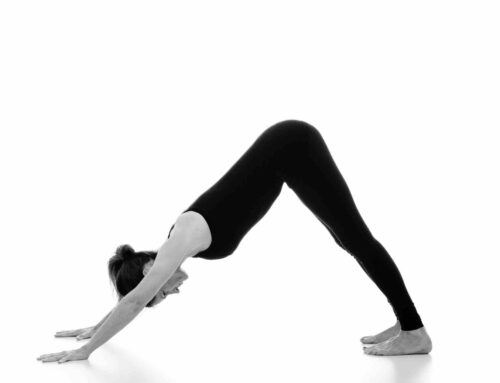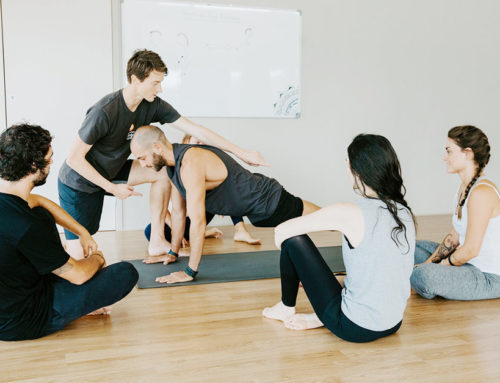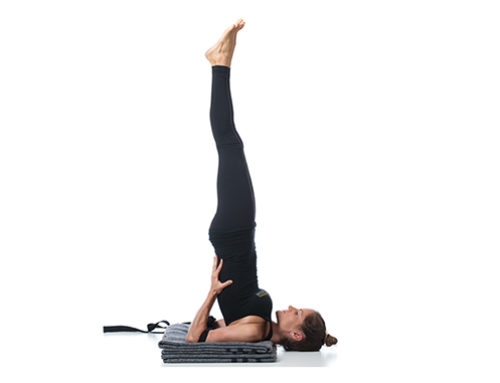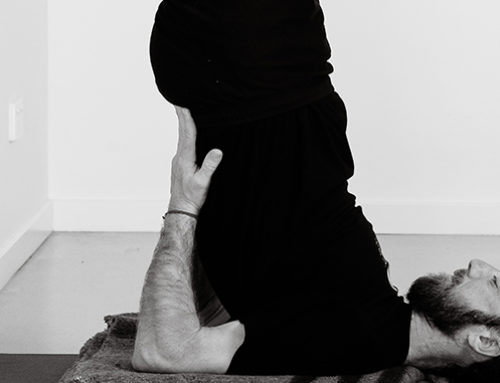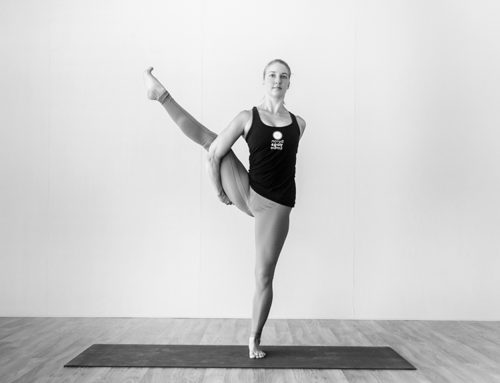Written by Brook McCarthy
One of the fundamental yoga postures adho mukha svanasana, or down face dog, is an asana that continues to evolve for both new and experienced students. It is very therapeutic, combining the benefits of an arm balance, forward bend and inversion. When the body is in perfect balance with minimal muscle tension, the mind and body come together in pure consciousness, allowing the flow of energy or prana.
Sanskrit
Adho – downward
Mukha – face
Svana – dog
Asana – physical posture
Benefits
The main focus is to lengthen the spine from tailbone to crown and this elongation releases tension throughout the entire spinal column. With both hands and feet in contact with the floor, the posture is balancing and grounding, helping to calm and centre the mind. This posture stretches the hamstrings and gluteal region, strengthens the wrists, arms and shoulders and opens both the hips and shoulders. It is a great preparation pose.
Begin on your hands and knees, spreading your fingers wide to distribute the weight evenly through your hands, send your seat to your heels, resting in balasana and becoming aware of your breath.Alignment
On your next exhalation, walk the fingertips out in front, lengthening out of the armpit by pushing the floor away, tuck your toes under and extend your sitting bones high to the ceiling. Create one long line with your arms and torso, from the hands through to the tail. Lifting strongly from the arms allows the pelvis and spine to lift further.
Position your feet inner hip width distance apart, pressing through thumb and forefinger to activate the hands, check the wrist creases are parallel to the top edge of the mat. Allow sufficient distance between the hands and feet to create the desired length in the spine. Bring the weight to your heels rather than applying too much pressure on the arms.
Activate the quadriceps by lifting the knee caps, relax your head and draw your shoulder blades onto the back. Hold the pose for five long inhalations and as you deepen into the pose with each exhalation, externally rotate your shoulders, creating more space between your shoulder blades. Using your shoulder muscles correctly helps keep the shoulders strong and healthy.
Challenges
The ball and socket joint of the shoulder is an unstable area and requires the four main shoulder muscles to support it. Through external rotation of the shoulders, the muscles strengthen and the cervical and thoracic spine is released, allowing the strength from the arms to move through the torso. When you rotate your arms so that the elbow crease is pointing forward, this external rotation of the shoulders also broadens the back.
The shoulder muscles work together to stabilise the joint as well as working individually. Developing strength in the supporting muscles is crucial to avoid injury or pain and also to prepare the body for more challenging poses such as chaturanga dandasana and weight bearing poses such as salamba sarvangasana, salamba sirasana and adho mukha vrksasana.
Variations
Slowly bend one knee while releasing the other heel towards the floor to stretch the calf muscle and Achilles tendon. Bend both knees slightly to relieve any tightness in the hamstrings or strain in the lower back. Even with bent knees the muscles receive a good stretch. The objective is to lengthen the spine, rather than focusing on lowering your heels to the floor.
If your shoulders are tight, practice this posture with your hands wider than shoulder width apart, or use blocks under the hands to further help open the shoulders. Doing a preparatory right angle stretch with hands on the wall at hip height are great for tight shoulders, tight hamstrings, back problems and those who are pregnant or menstruating.
For intermediate students, standing your feet on blocks helps deepens the hamstring stretch and also makes the pose more of an inversion, which is good for lifting and toning the uterus post-natal and post-menstruation. If you have wrist sensitivity, practice on your forearms or fists to alleviate pressure. Always check in with yourself and practice the most suitable variation.


